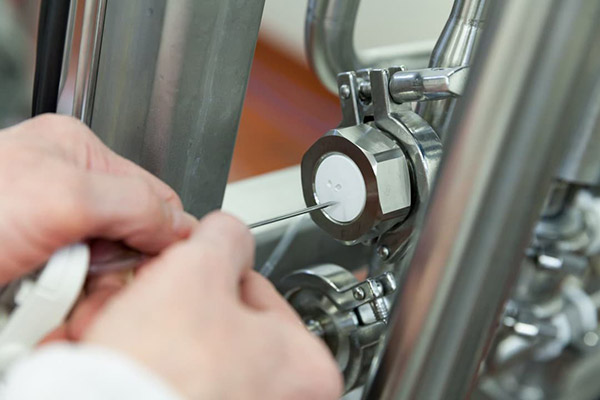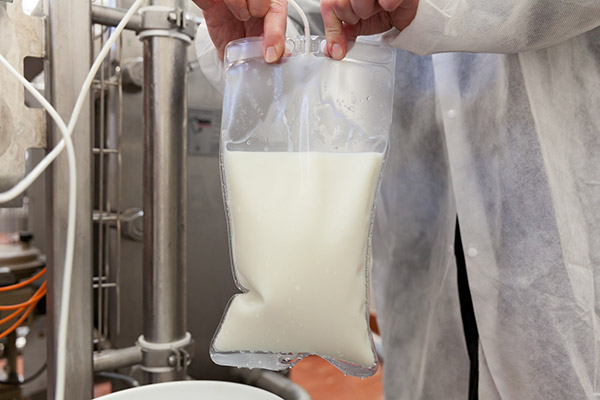The Diagnostics Process
If we trust the sampling and testing process, we are more confident in the result and can make informed decisions.
During the latter part of my career, I ended up in food safety and quality roles. I occasionally faced the dreaded phone call from the laboratory with the message, “We found X!” X was, of course, a food safety test parameter that had never given us any bother before. During this kind of phone call, you start realizing the importance of the diagnostics process.
When you are informed that X is in your product, two things happen:
- An immediate financial hit because you cannot retest for food safety, and the product has to be dumped.
- All-round excitement, because finding X is rare, and from where could it have come?
One of the first questions routinely asked when trying to find X is whether the test result is valid. Alas, it’s a human bias to accept results when they are as expected and to challenge results only when they are out of range. Suddenly the diagnostics process is in the spotlight. The laboratory might face the heat since it found and reported X, but the diagnostics process starts well before the actual test result.
The diagnostics process, as I see it, is the process from sampling through to the result, which involves:
- Taking the sample
- Handling the sample
- Testing the sample
- Processing and reporting the result
Generally, the process involves multiple parties and interfaces with an important decision at the end.
When it comes to the dairy industry’s diagnostics process, I have argued that the taking and handling of the samples may well be the weakest link.

Taking the Sample
In my previous article The Sample – Our Weakest Link!?, I mentioned some challenges around the person taking the sample. Often, the sampling plan has not been reviewed for some time, and the samplers have had minimal training; however, there are some other, perhaps less apparent areas we should explore.
Is the sample genuinely representative of the production run? I have noted that composite in-line samplers are getting very common these days, and they can be a step up from traditional grab samples. However, when composite sample bags are not changed in a timely manner, they fill up and will have very little sample of the last part of the run. What about those milk silos?
One flawed assumption is that dairy fluids will mix in a silo, and silo contents are considered homogenous. Well, it turns out that agitation and mixing are often not very useful, resulting in layering and separation in the silo. Both cases do not result in a representative sample.
There’s also a sample point design.
I’m fascinated with the latest diagnostic tools in the laboratory. Particularly, microbiological testing is going through a revolution. Unfortunately, bacteria are also the first to contaminate your sample. Dirty sample points like worn septum rubbers, poorly cleaned sample taps, or unhygienic utensils can easily lead to a contaminated sample and a “false” result (which is the actual result on an invalid sample). So perhaps, when you consider purchasing the latest micro-test equipment, you may wish to consider your process sampling technology as well.
When it comes to sampling practices, I have rarely come across a full review of the sampling protocols, tools, and techniques to identify sampling gaps. That is the case until X comes knocking, and the sampling practices get our full attention.
Handling the Sample
Samples sometimes enter “no-man’s land”; this is the zone where samplers have done their job, and the laboratory has not yet formally accepted the sample for testing.
I became acutely aware of the importance of sample handling when our laboratory was seeking ISO17025 accreditation. Our stance towards incoming samples was this: if it is labelled right, looks right, and is at the right temperature, we test it – no questions asked. The accreditation process forced us to take a good look at all the sample handling steps, including the management of the sample fridge in the factory control room.
It is essential to manage the interfaces in the diagnostics process. If those interfaces are poorly defined, your “no-man’s land,” like a poorly managed sample fridge, may well affect your sample integrity.
Another critical step in sample handling is sub-sampling. This is when those big composite bags are split up for the different tests. I trust most of us are well aware of the risk of sample contamination during a sub-sampling step. Yet, from what I’ve seen, sub-sampling rooms can be the “poor cousin” in the diagnostics process, and all that stands between X and your product is the skills of a diligent technician.
To me, understanding and improving the sampling and handling steps of the diagnostics process are some of the most beneficial actions we can take. How about drawing a “sample flow,” identifying all potential contamination hazards in our diagnostics process, something like a Sample Hazard Analysis Critical Control Point (SHACCP)?
Remember, our food business will only pay for the test if the sample is submitted! Only if we submit accurate samples will we get value for our money, gain confidence in the results, and become more accepting of the outcomes, even when they are unexpected.




